Museums are marvellous places, they take us back to times gone-by and show us how it used to be. The big city museums are usually rooms with different collections of all things. But I love discovering the small country museums lovingly put together and researched by the local community. Quite often they are in a heritage building that has been thoughtfully restored.
When we turned into the drive to “Home Cottage” it was like going back to the 19th century. The home built by John Maley in 1860 for his new bride Elizabeth Waldeck as a small 4 room cottage, soon had to be extended as the family grew to 14 children. As the most impressive building in the area and John being a successful business man, known by all as “King of Greenough Flats”, it soon became the social centre for the community of Greenough.
For me the true heroine of this story is Elizabeth, his wife.
Cast your mind back to this era, no modern conveniences, no supermarket, Perth, the nearest city almost 500 kilometres away and transport to get there was horse and cart.
Can you imagine how Elizabeth coped? 14 children, constant visitors calling in, a huge house to maintain and a garden to look after. She did have one maid servant, but reading Elizabeth’s diary (on display in the museum), the maid was quite lazy and uncooperative. No doubt the children had to do their share of the chores. Often John had to be away to look after other business concerns and Elizabeth would be left for days on her own and in those times, as well as usual chores, there was the added burden of running the flour mill that was on the property.
A botanist friend would visit regularly and he planted the beautiful pepper trees dotted around the property and giving much-needed shade. So come with me into the world of Elizabeth and John circa 1800’s.
Enter through the small door and suddenly you are in a world were every thing you do is hard work. To provide a meal means first of all growing the vegetables, killing and curing the sheep, beast or chicken, baking the bread, which is an all day task, chopping the wood for the wood-burner stove. Hopefully there has been enough rain to fill the tanks, but it will need heating for washing duties.
What resourceful people the pioneers were, and what a beautifully crafted table this is. A table this large would be needed for the family. I can imagine the happy times shared around this table, the laughter and chatter at meal times.
Times were hard but in a small tight-knit community they would make their own entertainment. There would always be a friend or neighbour to help.
Ironing was another essential chore, non-iron fabrics were not invented and cottons, calico and wool needed washing and then ironing.
Finally the days chores would be finished and time to go to bed.
I remember my Mother had one of these bed bases with an old horse hair mattress. It made a great trampoline for a 5 year old girl, but it was very saggy to sleep on.
In 1888 disaster struck this area. It was a Sunday in February, a normal mid-summer day, the sun beat down and the heat was oppressive. Unbeknown to this community a huge deluge of rain fell in the mountains a long way up north. Within hours the Greenough river was a roaring torrent With no communication systems to warn them, the first indication of danger was the roar of the river. Imagine the horror as the Greenough Flats became a huge lake 48 kilometres long and 5 metres deep in parts. 4 people drowned and houses, crops and stock were destroyed.
Home Cottage and the flour mill were not affected. Elizabeth provided shelter and food to many of the homeless families. The photos and accounts of this disaster were heart breaking to read about.
John Maley’s biggest losses came about by the many farmers that owed him money not being able to repay their debts after the flood had wiped them out. Many families moved away after the flood, some going to the gold fields, others starting up in other agricultural areas. John had to sell off many of his business ventures.
Finally a walk down the garden path took us to the “Dunny”, no plumbing and inside loos back then. But this is no ordinary Dunny.
Notice the newspaper hanging on the peg on the wall?
I can still remember in the 1940’s, as a child in England, using the newspaper for toilet paper. We did not have an outside dunny, but times were hard after the war.
The museum was established in 1966 by the Geraldton Historical Society then purchased by the local council in 1971. It is now managed by the Community Group of Greenough. Part of the house is still occupied by a manager, and as we left he called out to us
“Take a walk down to the river, it’s not often we see it with water running in it”
This was only caused by quite a minor rainfall that we have had over the past 10 days. I can only imagine what it was like in 1888.
**************************
Dawn from her blog “The Day After” encourages us to look for interesting windows and link them to her challenge “Lingering Look at Windows”. So this week I am showing you a few windows I found at the museum.





















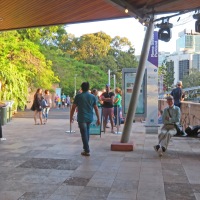
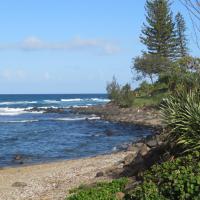
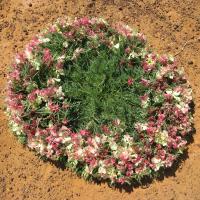
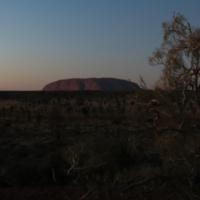


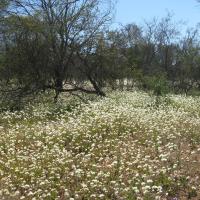
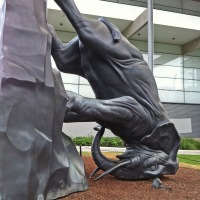

Great post. Thanks for linking up!
LikeLike
Your challenge is always at the back of my mind as I see new places. Jack often says “there’s a window for your blog!!!!”
LikeLike
Love you both!
LikeLike
🙂 🙂
LikeLike
Thoroughly enjoyed looking through this house with you, and was delighted to see the Singer sewing machine, complete with little button & miscellany jars. Oh, to poke around in them, as well! Lol!
del
LikeLike
Take a look at this post of Jacks Del http://jacksjottings.wordpress.com/2014/05/02/you-have-to-look/ We found a mini museum of old sewing machines at the back of a real old fashioned style haberdashery shop. You would’ve loved looking around it.
LikeLike
Great post – and that opening photo – well i felt like I was right there looking down – so great – could feel each pane of glass – 🙂
LikeLike
Amazing house and only a small part of it was the museum. The main part was still used as a home.
LikeLike
I will need to look this place up! We just did the free walking tour around Maryborough and loved it.
LikeLike
Maryborough is a great heritage town I love it. We are over in WA at the moment. If you plan coming over here come during wild flower season, August to October, they are saying it will be a good one this year as there has been a good rainfall over the past 2 weeks.
LikeLike
We need to be out of the Kimberly’s before wet season so we be travelling towards Perth around Oct/Nov.
LikeLike
Perfect time to be travelling along the coast. There is a caravan park at Eneabba that is a must stay. The owner is an expert on the wild flowers of the area and takes you on afternoon rambles, free, and tells you all about the interesting life cycles of them, do not miss his slide show in the evening. Go inland from Geraldton to Mullewa for amazing fields of flowers and lots of history and heritage buildings.
LikeLike
Great! Thanks for the tips 🙂
LikeLike
On second thoughts, unless it is a late season leaving in October is almost too late as the season starts up north approx. July then moves slowly south, August September is the height of the season in this area.
LikeLike
oh I love these old places that let us travel back in time and marvel at human strength and adaptability! thanks for posting~
LikeLike
I think the younger generation especially need to know how hard it was and in comparison, how easy life is today.
LikeLike
Love the stairs! 🙂
LikeLike
I had to hold tight onto the hand rail they were very steep Jo
LikeLike
I’m braver with stairs! 🙂
LikeLike
What a wonderful post! We love to visit historic homes and open air history museums. You have picked up on the human thread of the story in this history, which makes it very real and alive. You are a very good storyteller!
LikeLike
Thank you Naomi that is a heart warming comment I appreciate it
LikeLike
What an interesting post PP. I love reading about the history of a place. Times were hard in those days and I admire the settlers who had to be such tough folk to endure what they did. That’s a big house for a “cottage” – we nearly bought a house built in 1860 ourselves, with equally steep stairs to the attic. The OH wasn’t took keen on them!
LikeLike
It was a small cottage when they first built it and moved in Jude but I guess as the children arrived (14 of them!!!) and John had the money it gradually extended but retained it’s name.
LikeLike
You captured the history so well in words and photos. Also my memory of the day, the finishing touch is the swallow on the windowsill..
LikeLike
Yes that swallow was a happy accident…
LikeLike
The ones we were aware of would not stay still.
You always are lucky.
LikeLike
What an amazing place to visit. I love the old table built from packing crates! It would have been a very hard life back then.
LikeLike
I think your RUC has a history to rival this one too Dianne. Have you researched it’s background?
LikeLike
I know it was originally built in Smithfield, north of Cairns in about 1870 and was moved south to Cairns in the 1970’s to become the Rugby Union Club. I haven’t been able to find out anything else of it’s of its history yet, but some builders who have looked at it think it may have originally been a government building at some stage (school or police station). I’m still searching 😀 .
LikeLike
What a well travelled building it is Dianne. They built them solid in those days didn’t they.
LikeLike
I agree – grateful for what we have now. 🙂
LikeLike